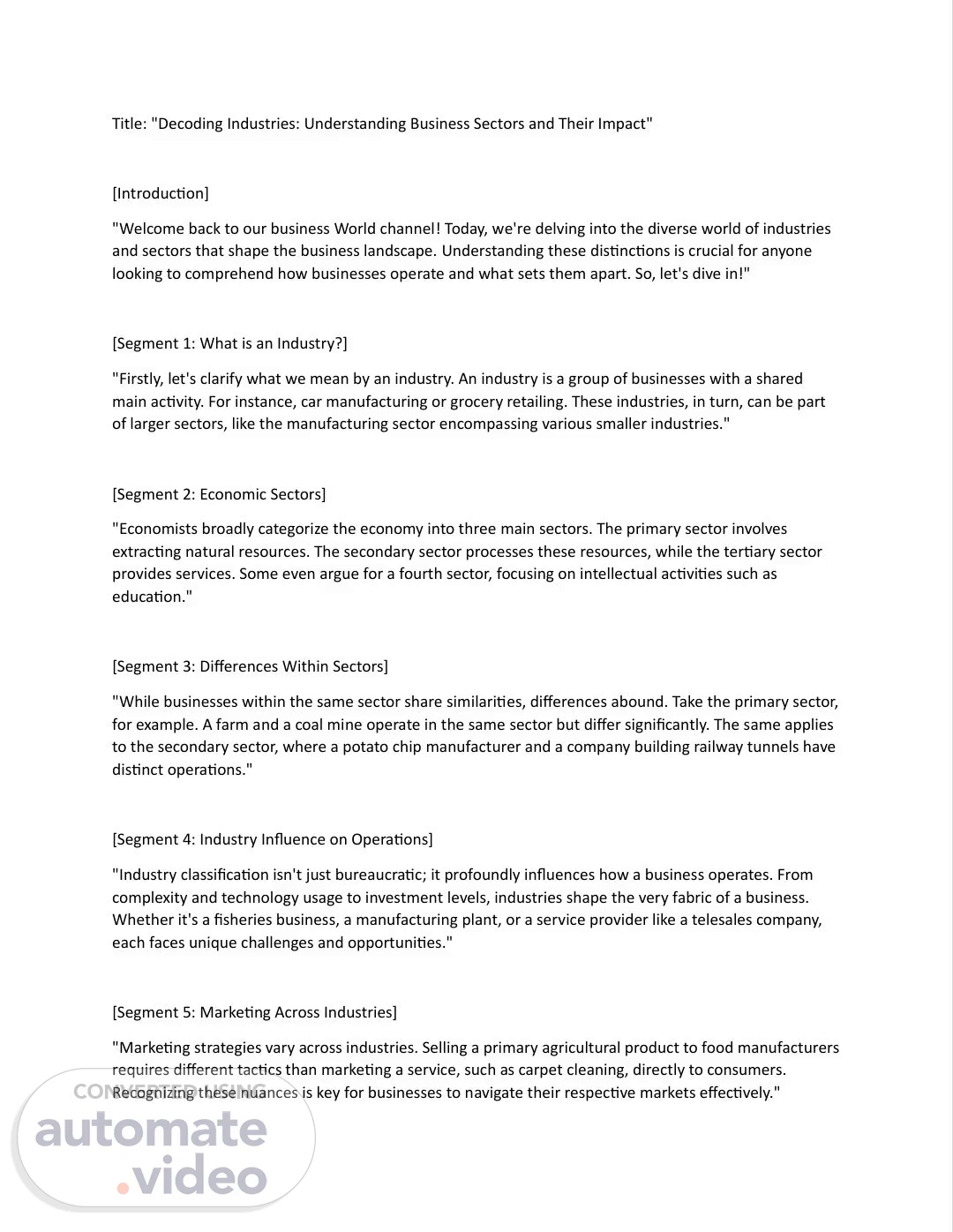Scene 1 (0s)
[Audio] Good morning, and welcome. Today, we'll be discussing how understanding the differences between industries and sectors can help businesses navigate their respective markets. Industries are groups of businesses with a shared main activity - for example, car manufacturing or grocery retailing. These industries can be part of larger sectors - such as the manufacturing sector, which encompasses various smaller industries. Economists broadly categorize the economy into three main sectors: primary, secondary and tertiary. The primary sector involves extracting natural resources, while the secondary sector processes these resources. The tertiary sector provides services, while some even argue for a fourth sector, focusing on intellectual activities such as education. Even within sectors, there can be huge differences between businesses. For instance, a farm and a coal mine operate in the same sector but are very different operations. Similarly, the secondary sector contains a range of activities - from potato chip manufacturing to railway tunnel construction. Industry classification has a significant impact on how businesses operate. It affects complexity, technology usage and investment levels, and can shape the competitive landscape and economic cycles of an industry. Next, we'll explore how businesses can leverage their knowledge of industries and sectors to their advantage..
Scene 2 (1m 41s)
[Audio] No matter the industry, understanding the differences between them is an asset to any business. From healthcare to the entertainment industry, the way businesses are set up and how they interact with the market is heavily influenced by the industry they are in. In the end, staying curious and learning are key, no matter which industry you are operating in..
